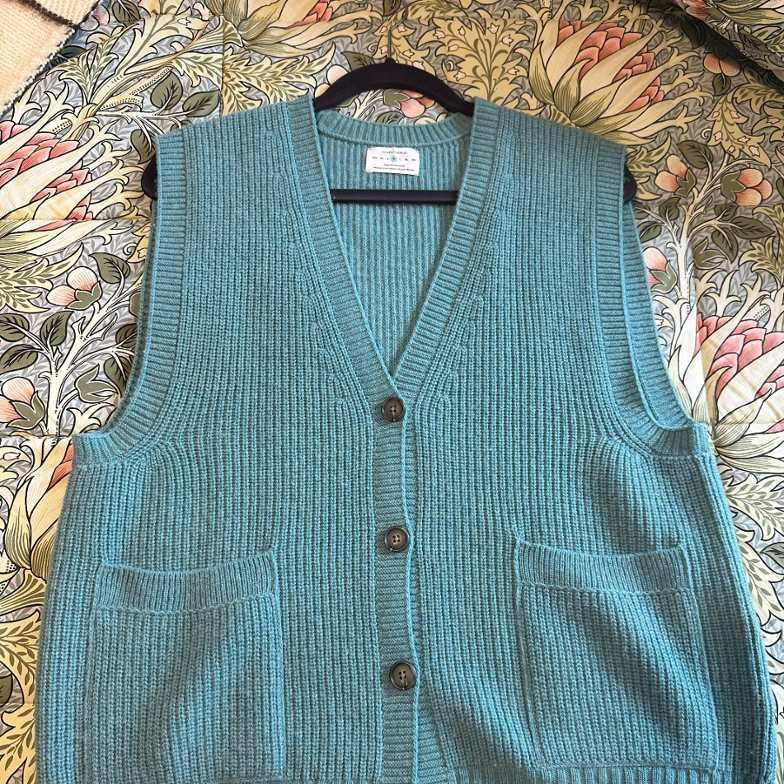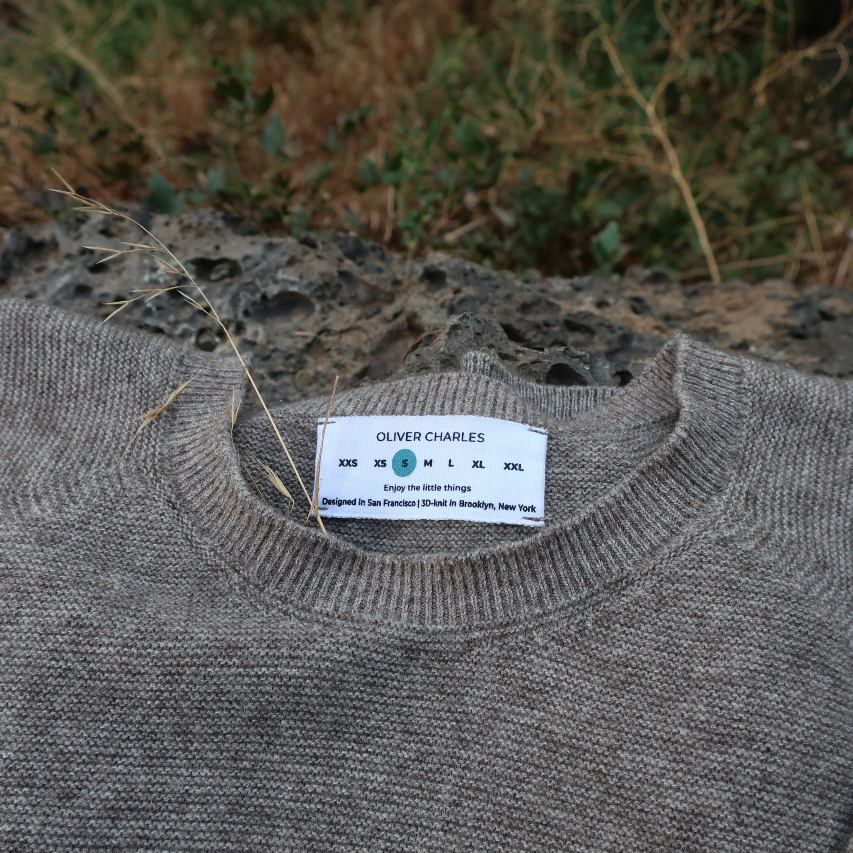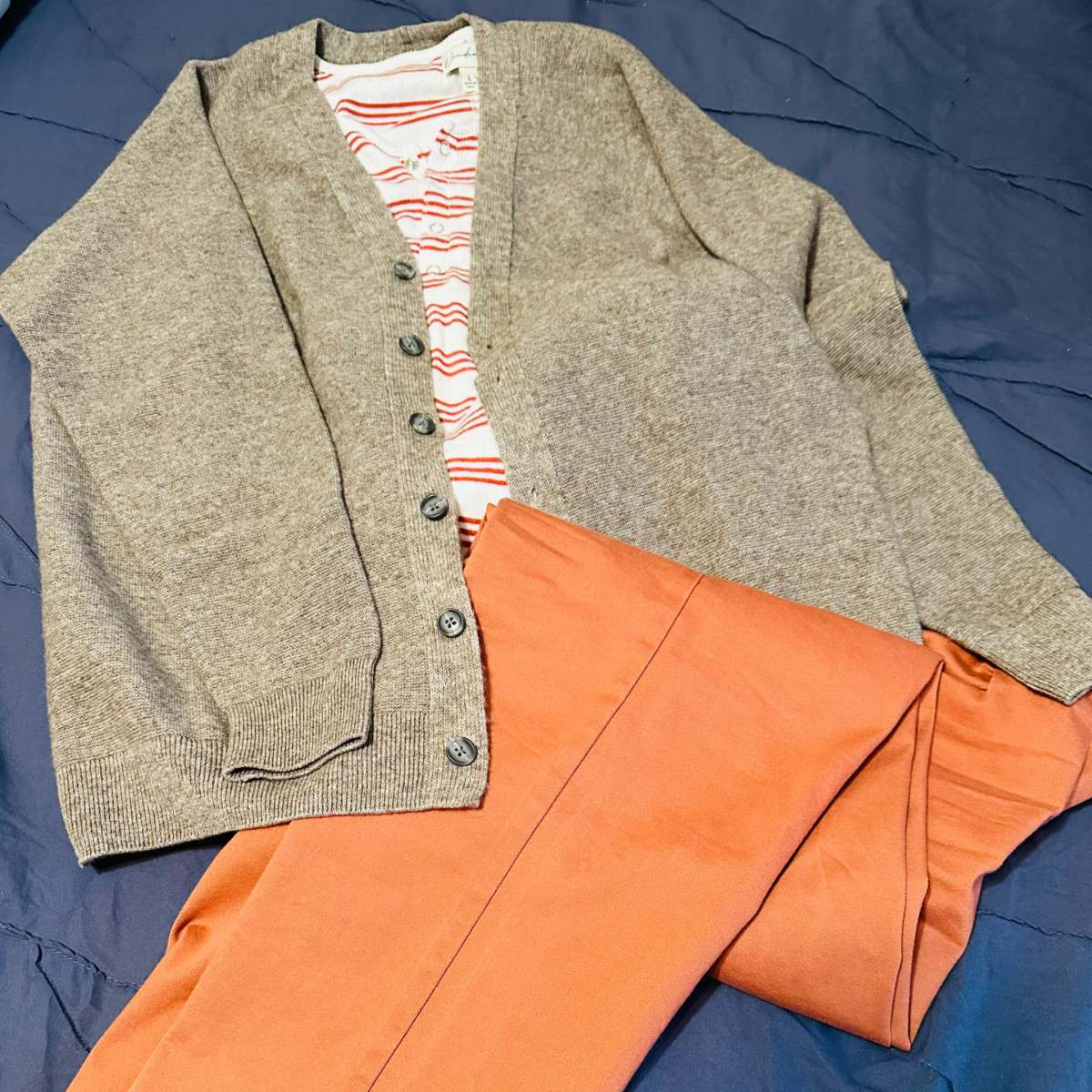Fast Fashion And Its Downfall
People's desires to stay fashionable has outweighed their want to be sustainable... until now.
August 26, 2021
By
Emma Chiles
The Clothes We Wear And Why They Matter
Introducing a four-part blog series about how consumers, producers, and technology advancements can reduce the environmental impact that fast fashion produces.
- Don’t Be An Outfit Tracker
- Fast Fashion And Its Downfall
- 3D-Knitting for a Sustainable Future
- Every Wardrobe Capsule's 1 Sweater
----------
My inbox is flooded with emails every day about the newest sales.
“Alert! Prices Dropped!”, “Up to 60% Off Our Faves!”
“Did Someone say 55% off?”
It astounds me how these companies can have sales all the time, sell their products for next to nothing, and still be profitable.
What surprises me even more is the sheer quantity of options they have. Pages upon pages of clothing, accessories, and random goodies that you don’t need but always want.
Currently, Revolve has 5,398 dresses and the lowest priced one being just $27! Not all pieces of clothing, just dresses. I find that to be a bit excessive. However, they do offer a “Sustainable Shop”.
Their criteria includes: responsible manufacturing, organic, recycled, plant based, low impact, and upcycled.
When examining this page, I found that they had 140 dresses with their lowest priced one being $42.
Although the price for sustainable clothing is higher, the quality and lifespan of the item is also higher.
Fashion is changing. As demand shifts from fast fashion to slow fashion, we will start to see a change in the products these companies offer.
In this article, I’m going to explore how fast fashion began and where it's headed.
What Caused The Rise Of Fast Fashion?
As many companies started sourcing their labor from developing countries, it didn’t take long for the apparel industry to catch on.
“The appeals of developing nations for apparel companies are cheap labor, vast tax breaks, and lenient laws and regulations’ (Linden, 2016).
This is what caused the rise of fast fashion. As tax, labor, and textile prices dropped and leniency in production environments increased, people's demand for new, cheap clothing skyrocketed.
The quality of the textiles diminished to synthetic materials instead of natural materials and led to the consumption of “342 million barrels of oil and releasing 8,000,000 tons of plastic into the ocean every year.”
“Fast fashion is a sector of the apparel industry that was developed in Europe to meet the rapidly changing preferences of primarily young women who want to follow trends in fashion but at a fraction of the cost” (Linden, 2016).
The industry changed from producing large amounts of one product to cover a season's worth of inventory, to producing smaller quantities but a greater amount of different products to satisfy consumer trend demands.
Thus, companies started popping up that took advantage of this model such as H&M, Zara, Forever 21, and GAP.
They began producing pieces of clothing that were meant to only be worn less than 10 times so customers would constantly have to buy new clothes (Birtwistle, 2017).
People's desires to stay fashionable have outweighed their want to be sustainable.
This, along with the short lifespan of fast fashion clothing, has caused a constant revenue stream for these companies.
Why Fast Fashion's Model Is Changing?
It has taken some time, but the growing awareness around the fashion industry and its production practices has started to shake the fashion world.
As people are becoming more environmentally conscious, they are more aware of how their items are constructed and whether they were produced ethically.
I feel better wearing clothing that I know is helping create a better world.
Although there's some pain when spending a lot of money, it's quickly forgotten when I can feel the quality of the clothing.
Knowing that my garments are going to last years instead of months gives me a sound state of mind when it comes to justifying my purchases.
Durable, versatile, comfortable, sustainable and stylish clothing is an investment, and I know I’m not the only person who feels this way.
It’s also not just the consumers who are driving this change. There are more and more clothing companies that are trying to establish environmental programs and environmental education.
For example, Marine Layer has a re-spun program where you can donate t-shirts to be recycled and you get a $5 credit per shirt. Rag & Bone accepts any pair of denim jeans to be recycled to get 20% your entire denim purchase.
These are all great initiatives, but just recycling clothing isn’t going to fix the problem.
This is why Oliver Charles has crafted a sweater that from start to finish encompasses sustainable fashion.
They have taken into account everything from fabric sourcing to packaging to create not only a phenomenal go-to sweater, but something that will last a lifetime and beyond.
Interviews:
To get more insight, I interviewed a few people that are from all over the country with varying knowledge of the environment and the fashion industry.
I want to thank Brianna, Walker, Heidi, Cam, and Shawn for their time to answer these questions. I really enjoyed getting to hear everyone's thoughts and great conversation.
What Are Your Favorite Clothing Companies?
Walker, San Francisco, CA: “I don’t know, I’m not really a brand name guy. A couple of my buddies have clothing companies that I like to support. Half of my wardrobe is from them.”
Cam, Portland, ME: “PoloSport, because there is a culture around it specifically related to the 90’s and a group of underground people. Champion has the best sweatpants. I wear Nike shoes, just big store factory suppliers for basics like shorts, underwear, and socks. There’s also something to be said about brand loyalty and it defining who you are and finding your community. In middle school I gravitated toward skate companies like Volcom, Quicksilver, Burton. What brands you buy your clothes from is a culture.”
It was interesting to hear how some people had a deeper connection with their clothes than others.
Cam had a deep appreciation for culture when it came to clothing and Walker finds meaning in supporting small companies.
Others, such as Heidi and Brianna, found it difficult to answer the question and seemed to have less of a connection to clothing brands.
What Do You Usually Pay For Clothes?
Brianna, Boca Raton, FL: “It depends on what it is, a new t-shirt I probably wouldn’t spend more than $50 on it. Jeans, there is a little more room there, probably $250. For shoes, probably $250 too.”
Shawn, Crosstown, TN: “I never spend very much on any piece of clothing. I think the most I’ve ever spent was $100 on a pair of shoes. I average about $60-$80, that’s what I will spend up to.”
People’s willingness to pay is a major factor in the demand for fast fashion.
When they see that they can get more clothing at cheaper prices, it’s much more appealing than one piece of clothing at a higher price.
However, the lifetime cost assessment shows that buying these higher quality items does save money in the end. Check out this Oliver Charles article to see why.
Now that I have become more knowledgeable on the subject, I have started to factor sustainability into the cost of clothing and can be confident that it will last for years to come.
If You Could Guess, How Many Pieces Of New Or Thrifted Clothing Do You Think You Buy A Year?
Brianna: “Clothes that are new to me, such as things that are gifted and thrifted, probably well over a hundred. I rarely ever buy brand new clothes. I probably buy one new item every three months.”
Walker: “I would guess maybe 30-40 items.”
Shawn: “I’ll get batches of clothes on my birthday and Christmas, I would say it averages about 15.
How Often Do You Go To Thrift Stores?
Cam: “I would say once or twice a month.”
Shawn: “Way more often now that I met this guy (Cam)."
I concur, I go to thrift stores way more often now that I met Cam.
This goes to show that you can help change your friends' habits as well as educate them on the subject!

What Do You Know About The Fashion Industry In Relation To The Environment?
Brianna: “I know that it’s really bad and companies like Zafful probably use child labor.”
Me: “Do you not buy from them or do you know what they’re doing and choose to ignore it?”
Brianna: “I don’t anymore but I am tempted.”
Me: “Did you stop because of your knowledge about the company?”
Brianna: “That and because having bought items from places like that before, I end up throwing them all away. I would rather have a nice piece of clothing that lasts longer and retains its value so I can sell it later.”
Shawn: “Not to any extent to where I could talk about it but I know it’s not good. It plays into the mass production, cheap labor, and all of the downfalls that come with that.”
Cam: “I am in the same boat as Shawn. I just learned that there is a shaming culture about wearing things more than once, especially for women, which is obviously not very good for the environment. We are already such a throw-away culture and I imagine the fashion industry has so many resources that they just trim-up and throw away. I don’t know enough to speak on it’s environmental impact but I can’t imagine it’s very good.”
Brianna was the only one to mention the low quality of these items.
It seemed like most people had a basic understanding of why the fashion industry could be bad, but not many people factored the quality of the item into their purchases.
With the men that I interviewed, most of their wardrobe consists of t-shirts and shorts whereas the women's clothing is definitely more fashion driven and in my opinion, provides more room for quality error.
When You You Shop, Do You Consider Where Products Come From To Make Sure Its Ethical?
Heidi, Carbondale, CO: “I’m always curious but there isn’t a good way to get those answers. I always wonder but I know that I’m not going to be satisfied.”
Me: “Would you say that you are curious but don’t want to do the research?”
Heidi: “Yes, but I also feel like it’s hard to find the research. We all know that Lululemon is unsustainable because of how big they are, but there’s not much out there that says if they are or aren’t. It seems fishy. If companies really want to make a point that they are sustainable, they will really put it everywhere. If you don’t see it on their website or in their catalog then they’re probably not sustainable. If they are, they go above and beyond to prove that they are. I feel like I care more than the average person but the misinformation is confusing.”
Walker: “I really don’t think about it at all. I just buy what I need.”
Cam: “I don’t because if I do then I can’t buy anything. I just get too overwhelmed. Everything I get is not ethically made but I’m too lazy to go out of my way to look into it. The convenience factor is a real thing. I mean I do think about it, but there's nothing I can do so I just try to stay in my lane.”
They all bring up valid points. Heidi argues that there isn’t a reliable way to find information on the production practices of each company and it can be frustrating.
However, there are some resources out there to help guide you in the right direction.
The Fashion Transparency Index is a great resource to help you decide whether or not the company is transparent about their production.
This is not a guide on sustainability, but it is a guide on how transparent these companies are about “their social and environmental policies, practices and impacts, in their operations and supply chain”.
The Ellen MacArthur Foundation is also a great resource for learning how we can change the fashion industry. They have a great 5 episode series you can find here.
I do think Cam brings up a really important point.
It can get overwhelming when trying to be as environmentally conscious as possible;
I think a lot of people struggle with this. So how do we fix this? It’s a tough question to answer.
There isn’t going to be one single solution and it’s going to take effort from all aspects of the industry including the consumers.
How transparent are the 100 biggest fashion brands? Find out in the Fashion Transparency Index https://t.co/TYgMcjIsm2 #FashionRevolution pic.twitter.com/mezYR49nVd
— Fashion Revolution (@Fash_Rev) April 24, 2017
Would You Try Building A Capsule Wardrobe?
Brianna: “I do want to try it because I want to be able to live out of a van. It is something that I have been trying to slowly introduce myself to by being conscious of what I’m buying and how many outfits I can make out of that one item. I want to travel more, but if I have the space I definitely know how to fill it.”
Walker: “Hell yeah! I would love to do that. I want to see myself living more minimally.”
Cam: “I think if I’m a hoarder with anything, it’s clothes. I think I would feel restricted and limited. I also wear the same pairs of clothes but I like having options. I’d be able to do it but I wouldn’t like it. It would stress me out.”
The majority of people I spoke to were very enthusiastic about trying to do a capsule wardrobe and I think that shows how people's lives are shifting not in terms of just clothing, but possessions in general.
The public is growing more sustainably minded when it comes to waste.
Nevertheless, there is still a long way to go. It will be hard for people to change their habits, such as Cam with hoarding clothes, but it doesn’t mean that we can’t change.
I always love having this conversation with people and I get something out of it every time.
People have a lot of different ideas to add to the conversation and whether or not it changes their perspective on the subject, it’s important to talk about.
I appreciate everyone who participated in the discussion and I thank you all for being a part of it as well!
Sources:
Birtwistle, G., & Moore, C. M. (2007). Fashion clothing - where does it all end up? International Journal of Retail & Distribution Management, 35(3), 210-216.
Linden, A. R. (2016). An analysis of the fast fashion industry. New York: Bard College Linden
Emma Chiles is a Senior at the University of Colorado Boulder. Emma's majoring in Environmental Studies and is pursuing a career in sustainable and ethical fashion. Her goal is to lessen the environmental impacts that the fast fashion industry has on the environment through consumer and brand awareness.
If you believe that every good wardrobe starts with owning less and owning better, consider buying yourself an OLIVER CHARLES sweater.
Shop NowSustainable Wool Sweaters And The Economic Choices We Make
It's past time to kill the fast fashion haul.
Read moreEmbracing Outfit Repeating: The Smart Traveler's Guide
Maximizing my wardrobe’s efficiency and style.
Read moreCapsule Wardrobes, Creativity, And Me
How a capsule wardrobe sparked a fire around my style.
Read more



